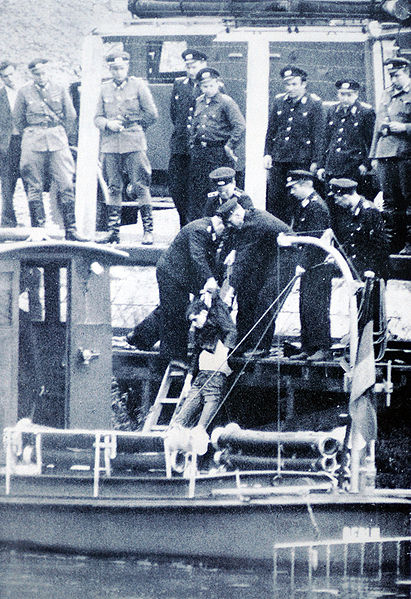Be advised: In posting this article, I am violating one of Florida’s most recent laws. Signed by our illustrious Medicare governor, it bans internet cafés… and computers and tablets and smart phones. Yep, I’m a criminal. This comes two years after Florida banned sex. I can’t get away from my criminal past.

Two stories dominate the news here in central Florida. First is the George Zimmerman trial which went to the jury Friday.
I happen to know one of the defense attorneys, Don West, his wife and family, although I haven’t seen him in some years. He’s a decent man and it was from him I learned that even male criminals have a back story, that most were dysfunctionally forged in childhood, some by events so terrible most of us cannot imagine.
After doing my small part to bring the Sanford shooting to the attention of readers, I haven’t written about Trayvon Martin and George Zimmerman in quite some time. Opinions appear to be as polarized as the prosecution and defense: Some see Zimmerman as a hero defending his neighborhood from marauding criminals ‘who always get away’ and that he merely defended himself against a violent teen who ambushed him. Using eMail blasts and doctored photos, the neo-nazi StormFront.org has partially succeeded in polluting opinions, so that casual followers might imagine Trayvon was a gang-tattooed, gold-toothed, junkie with a criminal record.
As brought out in testimony, yes, he wore two tattoos: One honoring his grandmother and the other a depiction of praying hands.
The state’s case is simpler: An innocent teen boy, minding his own business, was stalked and then waylaid by a Neighborhood Watch ward captain and wannabe cop operating outside his purview.
I suspect the truth is that George Zimmerman isn’t a vicious person and I don't conclusively intuit he’s racist. Instead, Florida’s Shoot First / Stand Your Ground law disfavors the black community and defies common sense, but in Florida, that’s no reason to change a bad law.
The news media here referred to the ‘racially charged’ testimony of Trayvon’s friend, Rachel Jeantel, sneered at by Sean Hannity. To my mind, the scene wasn’t so much racially charged as it was sadly funny, exposing the gap between a 60-something white man and a teenage black girl. A baffled Don West simply couldn’t fathom what the girl was saying. I kept thinking of the scene in Airplane when Barbara Billingsley pops up, “Oh stewardess, I speak jive.”
The prosecution handed the defense several gifts, including most of their witnesses exploited by Mark O’Mara and Don West. I couldn’t believe prosecutors put Zimmerman’s best friend, Mark Osterman, on the stand, giving him a platform to present Zimmerman’s claims virtually unchallenged. WFTV’s local legal analyst, former criminal attorney Bill Sheaffer, scathingly criticized the state’s ongoing gaffes, mostly for putting forward Zimmerman’s testimony making it unnecessary and even risky for him to testify.
It does appear Trayvon took Zimmerman to ground and straddled him. After all, Zimmerman was an armed guy following Martin in the dark (against the instructions of the police 911 operator). The defense made an issue whether the pistol was pressed against Trayvon’s chest or not, whereas I’m not certain that’s critical. Indeed, the key to the defense was to portray Trayvon as the aggressor and Zimmerman the victim.
Other problems with the gun disturb me. The defense echoes Zimmerman’s contention that Trayvon grabbed Zimmerman’s weapon and yet Zimmerman somehow wrested it from Trayvon’s grasp despite the boy’s purported overwhelming strength. The big problem: How would Trayvon know about a concealed pistol in a waistband holster under George’s rain jacket in an unlit area on a rainy night? If, as Zimmerman claims, Martin managed to get him on the ground and pummeled him, I can’t imagine the boy knew Zimmerman had a gun. Either Zimmerman had already announced or even pulled out his pistol whereupon Trayvon defended himself, or Zimmerman didn’t pull out his Glock until he was already under Martin, which implies Trayvon couldn’t have known he had a pistol. To me, that’s the biggest hole obscured in the defense’s case. The state asks another question: If Trayvon straddled a supine Zimmerman and the gun was in the waistband holster as Zimmerman claims, wouldn’t Trayvon have had to climb up off the man to reach for the concealed pistol?
One other issue dismays me although it doesn’t affect the other facts of the case. Not for a second do I believe the comic book dialogue Zimmerman attributes to Trayvon: “Tonight you die, MF.” And later, after Zimmerman fired, he claims Martin stood and gasped, “You got me!” Beyond the bad B-movie lines, the medical examiner testified that after the Martin boy was shot through the lung, drowning in his own blood, he wouldn’t have been able to move, let alone stand or speak. To be clear, Mark O’Mara managed to slightly dislodge the ME’s certainty, but the overall gist remained– the shock would have prevented Trayvon from moving.
Note: We haven’t been told why, but local channel 6’s WKMG has been banned from the courthouse amid Twitter speculation it may have something to do with their interview of Sanford’s ex-police chief who’s openly critical of the mayor and city manager. WKMG was the dominant all-Casey-Anthony all-the-time news station and had been a major news source following the Trayvon Martin shooting.
Note: The trial is over. Two hours before this article went to press, the jury announced their verdict: Not Guilty.
Shooting for Fun
We don’t know many details yet, but for weeks a number of random shootings of houses and cars have plagued Kissimmee and nearby Saint Cloud, which included at least one killing and possibly two. This week, Osceola sheriff arrested four youths: two 20-year-old males, a 17-year-old girl, and the primary shooter, a 15-year-old boy.
On 24 June, Lothar Schafer bought himself and his teen son a .45 calibre Hi-Point carbine. The following day, the shootings began when the quartet of friends rode around Osceola County from midnight to dawn, shooting at houses and cars. At six one morning, the 15-year-old decided to shoot a young man at a bus stop ‘for fun.’ The same boy also stands accused of stabbing a robbery victim in the throat.
Jorge Muriel, the anguished brother of one of the accused said, “I wish I didn't grow up when guns were so common. … If people didn't have guns this wouldn't have happened.” ‘People’ in this case were all less than 21.
Details how investigators zeroed in on the youths remain sparse. We do know the Osceola Sheriff’s Department called in the local Florida Metal Detecting Club which proved its, er, mettle by finding the shell from the bus stop shooting, which linked the murder to the other shootings.
Remember the chief prosecutor in the Casey Anthony trial? Jeff Ashton announced a few hours ago he’ll prosecute the shooters. Stay tuned, my friend.











 by Jan Grape
by Jan Grape










